Sales Forecasting
Gain valuable insight for allocating resources and boosting sales.
Identifying Your Metrics
The Key Performance Indicators (KPIs) your organization needs to track and measure vary depending on your industry, market, and business model. Here are some common metrics that Striven can track for better sales forecasts:
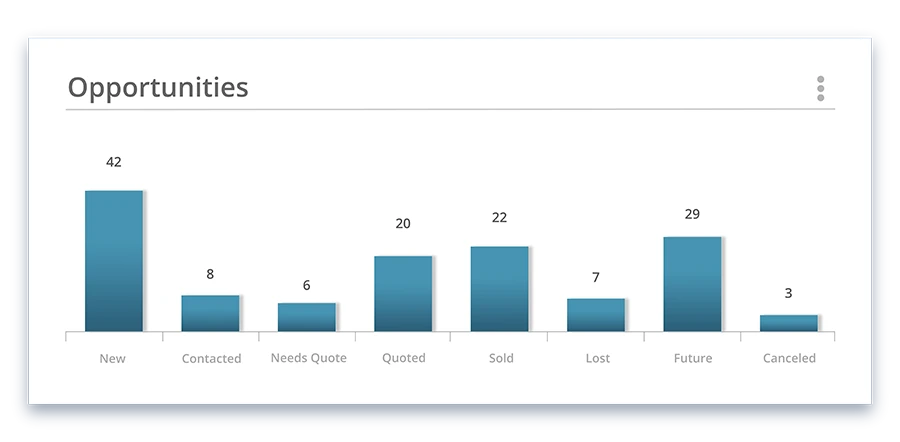
- Historical Sales Data: Analyzing past sales performance provides insights into seasonal trends, growth rates, and historical patterns that can inform future forecasts.
- Lead-to-Sale Conversion Rate: Understanding how many leads actually convert into paying customers helps estimate future sales based on current lead generation efforts.
- Sales Pipeline Value: Tracking the total value of deals in your sales pipeline at different stages provides visibility into potential future revenue.
- Average Deal Size: Calculating the average value of each sale gives you an idea of the revenue generated per customer or transaction.
- Sales Cycle Length: Knowing the average time it takes to close a deal helps project when deals currently in progress might convert into revenue.
- Churn Rate: For subscription-based or recurring revenue models, understanding how many customers are leaving over time is crucial for forecasting ongoing revenue.
- Market Trends and External Factors: Keeping an eye on industry trends, economic indicators, and external factors that can impact buying behavior helps refine your forecasts.
- New Customer Acquisition Rate: Monitoring how many new customers you’re acquiring within a specific period provides insights into your business’s growth trajectory.
- Customer Retention Rate: For businesses with a focus on repeat customers, understanding how many customers you’re retaining over time is important for predicting ongoing revenue.
- Promotions and Product/Service Launches: If you’re introducing new products or running promotional campaigns, tracking their impact on sales helps adjust your forecasts accordingly.
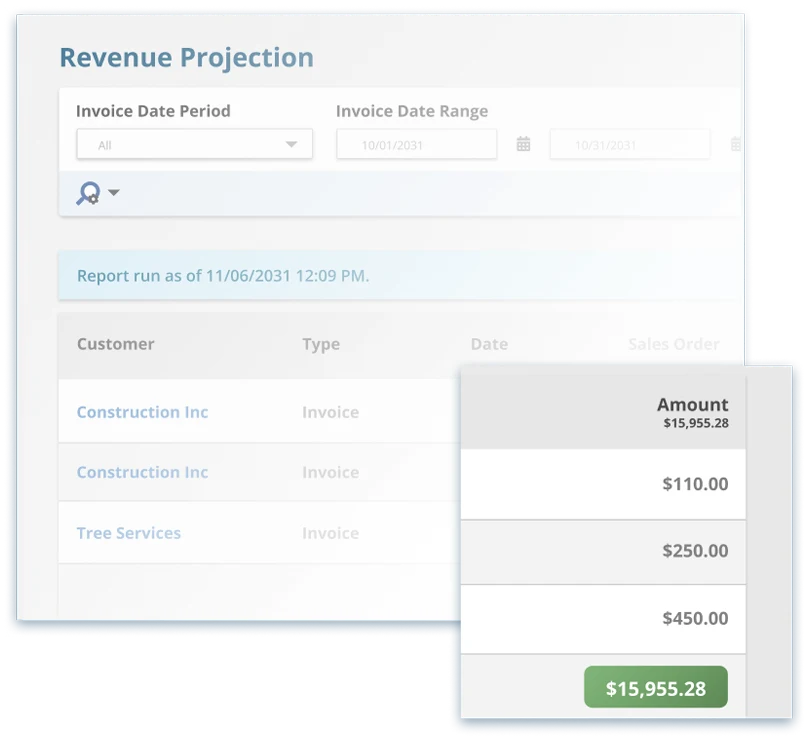
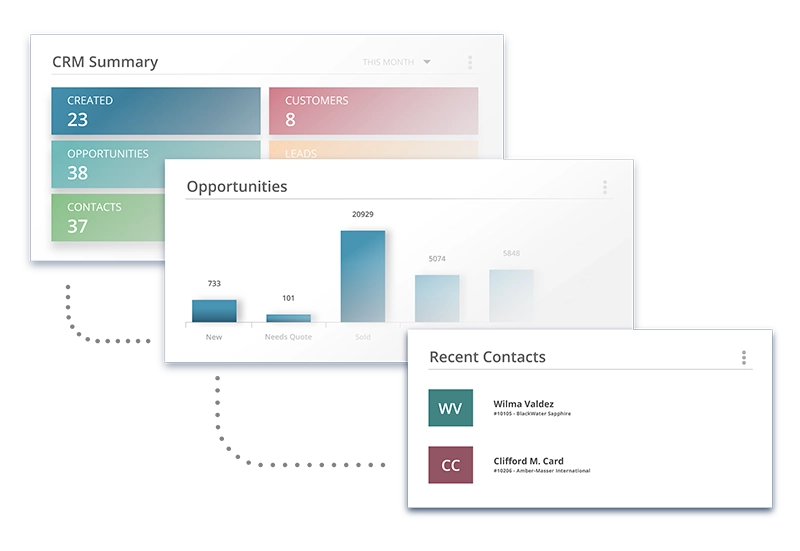
Integrated CRM
Forecast metrics need data, and CRM software is where you’ll find a lot of it.
Striven’s CRM for sales is even more powerful as part of an all-in-one solution that connects with other departments including finance, marketing, and operations.
Tracking Sales Opportunities
Sales forecasting gives insight into future sales. Tracking opportunities is also about future sales.
Striven has built-in functionality to automate the sales process from initial lead to happy customer.
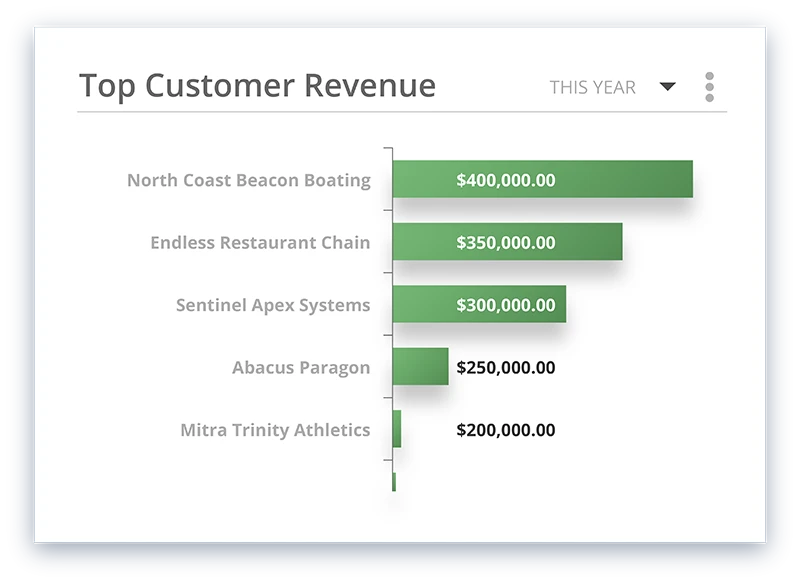
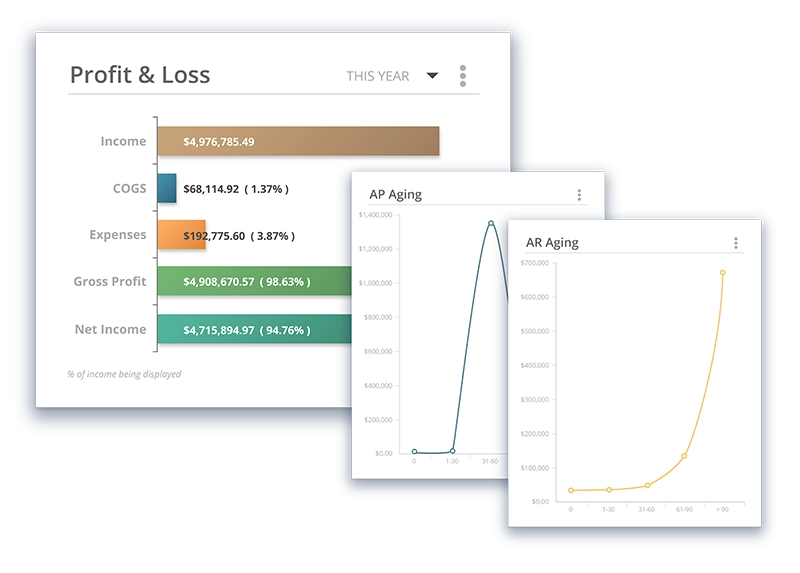
Business Intelligence
BI refers to a set of technologies, processes, and tools that assist organizations in gathering, analyzing, and presenting data to support decision-making and strategic planning.
Data Visualization
Presenting data through visual formats such as charts, graphs, dashboards, and reports.
Striven makes it easier for stakeholders to grasp complex information and identify trends at-a-glance.
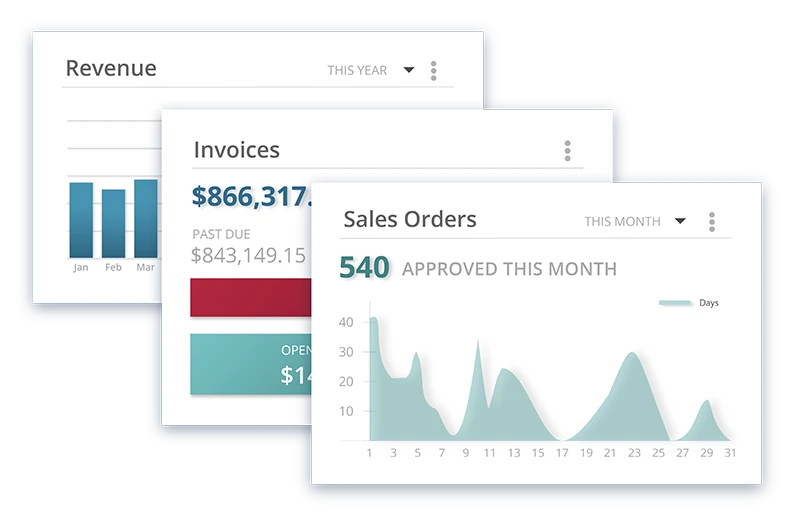
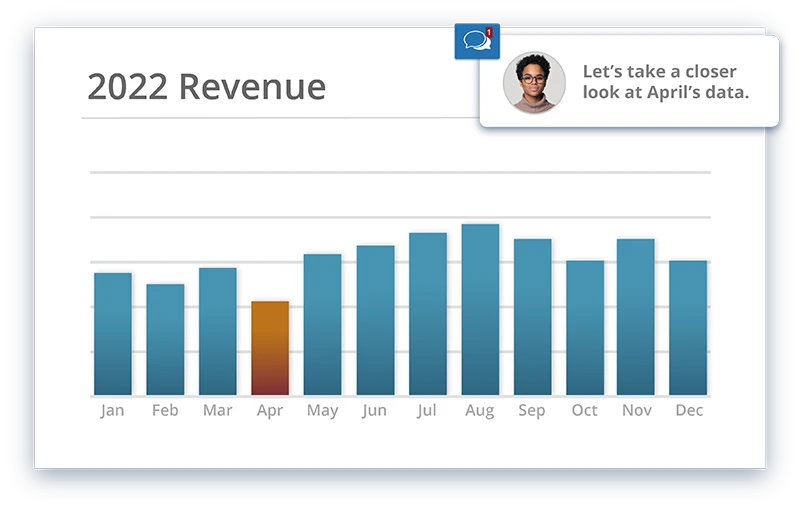
Report Generation
Reports provide a snapshot in time of key performance indicators (KPIs) and other relevant metrics.
Striven’s standard and customizable report templates let you see your data your way.
Dashboards
At-a-glance KPI metrics to help make decisions in real time. Striven has a customizable, widget-based dashboard to see data how you want to see it.
Striven can also plug in to any dashboard software tools you may already be using.
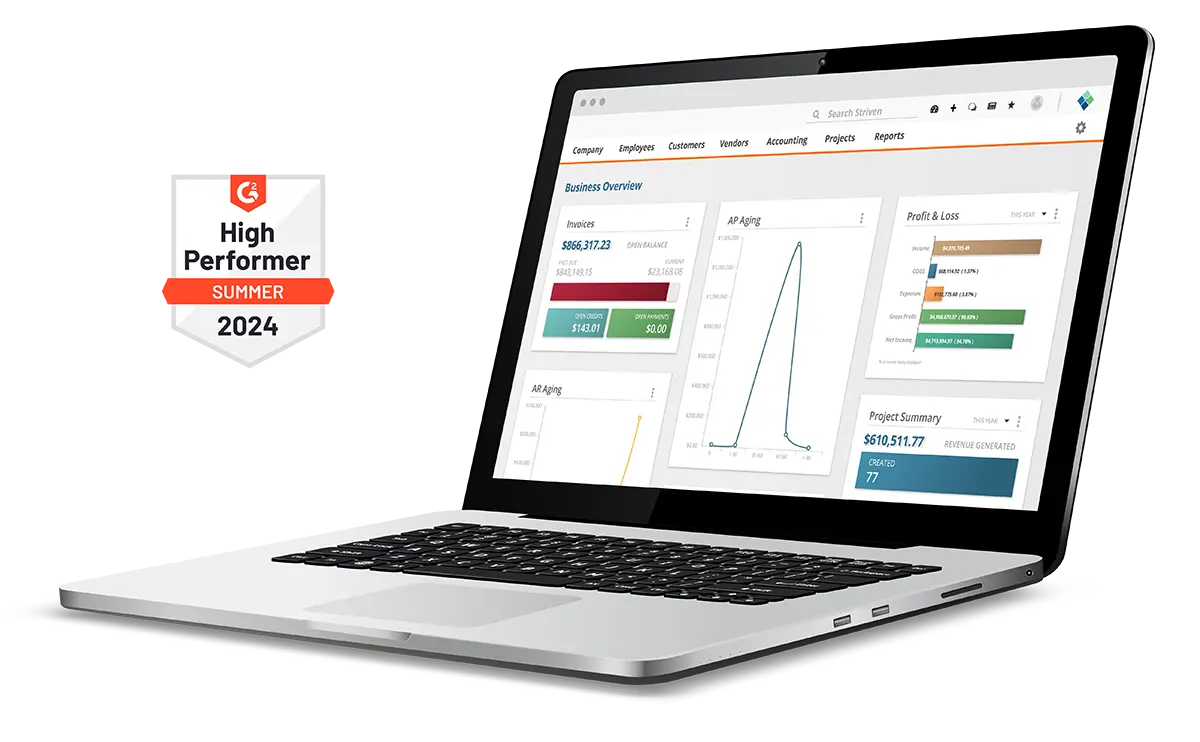

“Striven facilitates our sales tracking, quoting customers, information repository and centralized place to store and access sales info.”
—Justin H., Business Development
Ready to try it? Start here.
Frequently Asked Questions
-
What is sales forecasting?
+
Sales forecasting is the process of predicting future sales based on historical data and relevant market trends. It helps businesses make informed decisions about production, inventory, and resource allocation.
-
Why is sales forecasting important?
+
Sales forecasting provides businesses with insights into future demand, enabling them to plan effectively, manage resources efficiently, and make strategic decisions to optimize sales and profits.
-
What data is used for sales forecasting?
+
Sales forecasting relies on historical sales data, market trends, customer behavior, economic indicators, and any relevant external factors that might impact sales.
-
What are the main methods of sales forecasting?
+
Common methods include time series analysis, moving averages, exponential smoothing, regression analysis, and qualitative methods like expert opinions and market research.
-
How accurate are sales forecasts?
+
Accuracy varies depending on the method used, the quality of data, and the complexity of the market. While forecasts may not always be precise, they provide valuable insights for decision-making.
-
Can sales forecasts be used for different timeframes?
+
Yes, sales forecasts can be short-term (weeks to months) or long-term (years). Short-term forecasts help with immediate operational planning, while long-term forecasts assist in strategic planning.
-
What challenges can impact the accuracy of sales forecasts?
+
Challenges include sudden market changes, external events (e.g., pandemics), limited or inconsistent historical data, seasonality, and inaccurate assumptions about customer behavior.
-
How often should I update sales forecasts?
+
The frequency of updates depends on your business’s volatility and the nature of the industry. Generally, forecasts should be reviewed and updated regularly to reflect changing market conditions.
-
How can I improve the accuracy of my sales forecasts?
+
Improving data quality, incorporating advanced analytics techniques, considering external factors, and seeking expert input can enhance forecast accuracy.
-
How should I use sales forecasts in decision-making?
+
Sales forecasts should guide decisions about production, inventory management, marketing campaigns, resource allocation, and overall business strategy. They provide a foundation for making informed choices that align with projected demand.
Striven's Got You Covered
Whatever your business, Striven is here for you,
making your workweek just a little easier.
